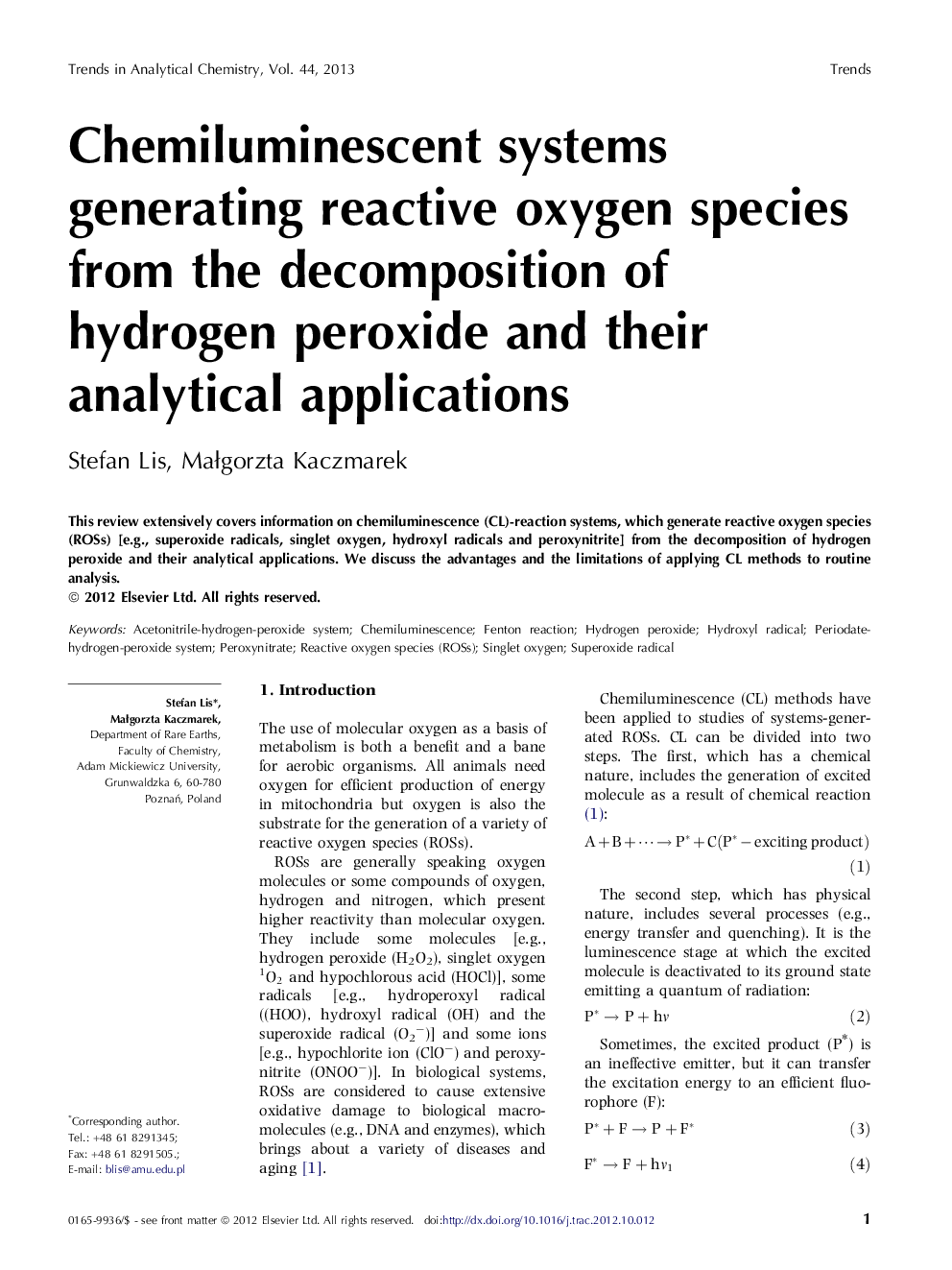| Article ID | Journal | Published Year | Pages | File Type |
|---|---|---|---|---|
| 1247977 | TrAC Trends in Analytical Chemistry | 2013 | 11 Pages |
Abstract
This review extensively covers information on chemiluminescence (CL)-reaction systems, which generate reactive oxygen species (ROSs) [e.g., superoxide radicals, singlet oxygen, hydroxyl radicals and peroxynitrite] from the decomposition of hydrogen peroxide and their analytical applications. We discuss the advantages and the limitations of applying CL methods to routine analysis.
► Chemiluminescent reaction systems generate reactive oxygen species (ROSs). ► Reactive oxygen species (ROSs) can detection of various analytes. ► Analyte structure is related to chemiluminescence intensity. ► Chemiluminescence methods have high sensitivity and a wide linear range. ► Chemiluminescence methods may be more sensitive and more selective.
Keywords
Related Topics
Physical Sciences and Engineering
Chemistry
Analytical Chemistry
Authors
Stefan Lis, Małgorzta Kaczmarek,
